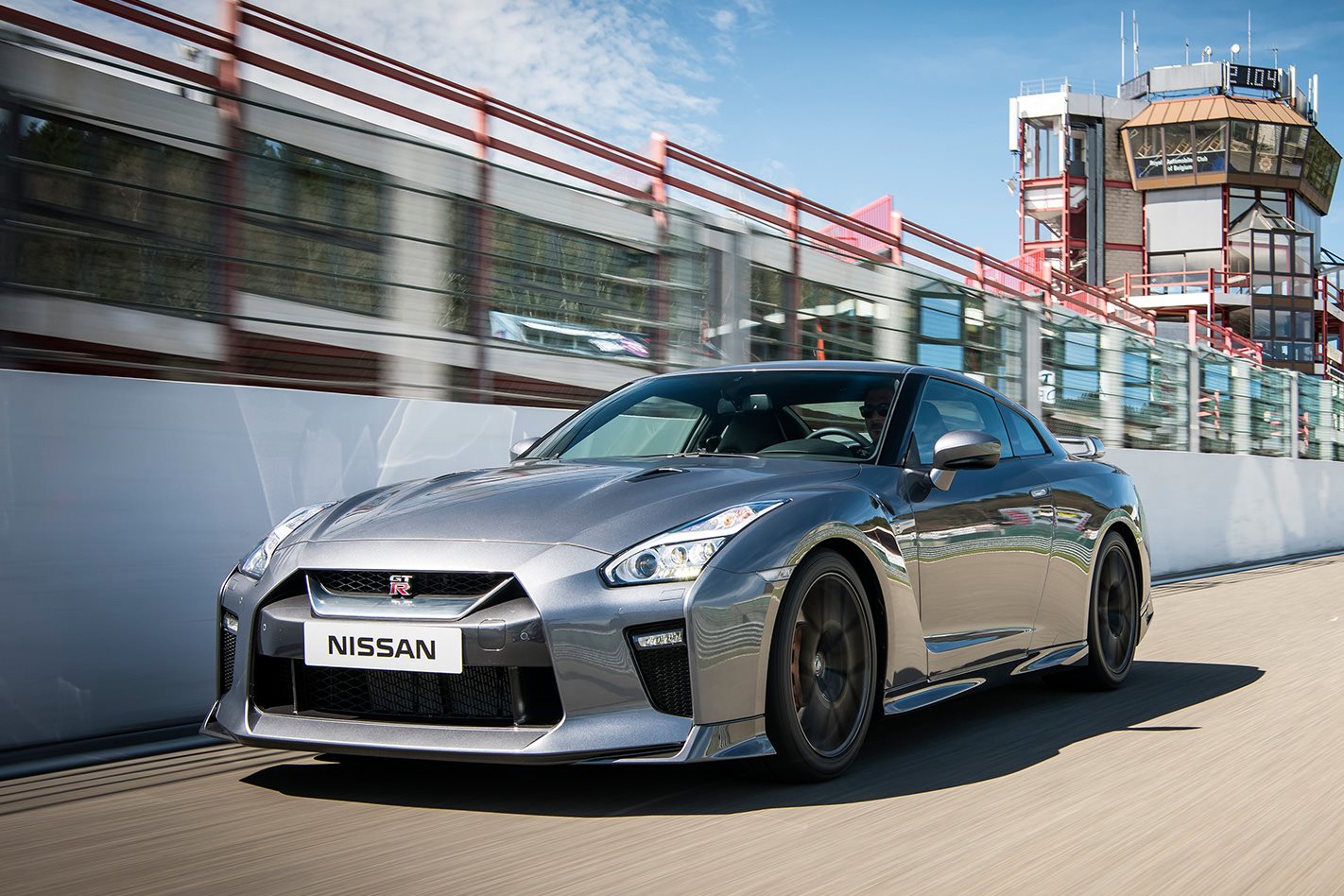It seems like we’ve been talking about Nissan’s R35 GT-R for a long time. A very, very long time, in fact.
Consider that the first concept car appeared way back at the 2001 Tokyo Show, and that its R36 replacement isn’t expected until 2020 (at best – it may well push out to 2022), and Nissan’s fire-breathing poster child will be well clear of the moody adolescent years and will be able to vote before it gets put out to pasture.
Look what’s happened in the performance world since the R35 first appeared in 2008: Porsche 997 versions one and two, then 991. Ferrari 458 and 488. McLaren’s MP4 12C wasn’t even a glint in Ron Dennis’s eye when the R35 lobbed Down Under in 2009, a year after its debut in Japan and the US.

So here we are in 2016, and instead of checking out an all-new version of a car that utterly annihilated the affordable performance bar, Nissan is instead giving us what it calls the R35’s biggest and most transformative facelift yet.
It’s one of the trademarks of the R35’s life cycle, and the source of the occasional titter behind the hand when the annual press release dropped; “Oh look! Nissan has reprofiled the bolt heads on the R35’s radiator support bar!” we’d chortle. A myriad of minute tweaks over the years, however, has led us to this moment, where the R35 looks to have at long last found the elusive balance between raw firepower and real-world finesse; more GT/R than GT-R, in other words.
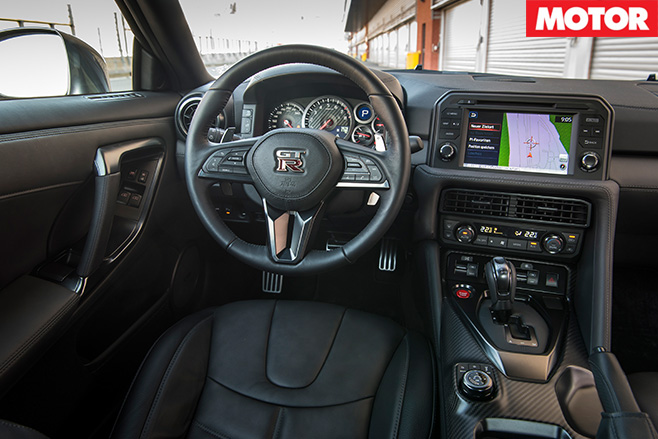
An exterior design refresh that comprises new bumpers, a new grille and bonnet, deeper side sills and a new rear diffuser has also been added to the new GT-R, which still doesn’t move the car a million miles from its original, brutally purposeful looks. The rear bumper was plucked from the GT-R NISMO; all the better to route airflow and exhaust gases with, my dear. The aerodynamic tweaks are also said to increase cooling and downforce without adding drag.
A structural redesign has stiffened the bodyshell around the widscreen, the A and C-pillars in particular, while a suspension update includes stiffer mountings, lighter Y-spoke Rays 20-inch wheels and revalved Bilstein adaptive dampers.

The car will arrive in Australia in September with a choice of two trim levels: Premium Edition and the awkwardly named Track Edition Tuned by NISMO. The latter tops the regular model line-up and gets its own wheels, tyres and trick damper tune.
The improvements to the cabin ambience are quite striking. Most of the cheaper-looking plastics and fiddly switches have been banished, with a slimmer-bossed steering wheel, leather-wrapped upper fascia and carbon fibre-clad transmission tunnel now giving an impression of quality and luxury that has thus far been missing.
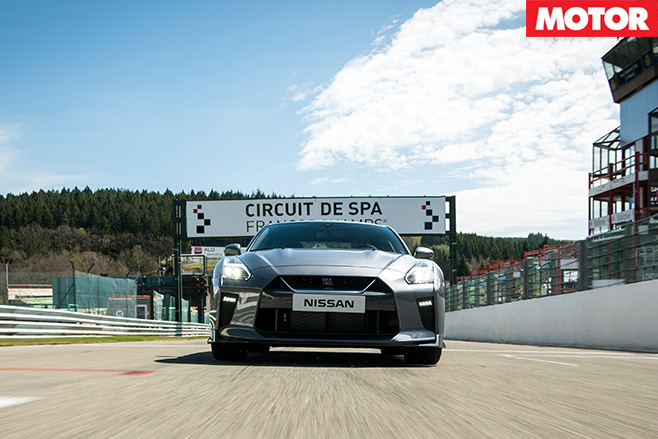
Refinement has increased, too. The dual-clutch automatic transaxle gearbox is almost unrecognisable from the clunky, shunting six-speeder that the R35 came with originally. It juggles ratios smoothly and quietly on part-throttle and at low speeds, although it slurs a bit when you’re pressing on. Cabin noise has been reduced and ride comfort improved, so the GT-R can now cover big distances without taking such a toll on your senses.
The extra 14kW doesn’t, according to Nissan, make the car any quicker to 100km/h from rest – but as part of a curious new gentlemen’s agreement with fellow Japanese manufacturers, Nissan no longer quotes an official 0-100km/h time. Fortunately, our test route afforded the chance of a momentary bit of performance benchmarking using satellite timing gear that we, er, just happened to have on hand.
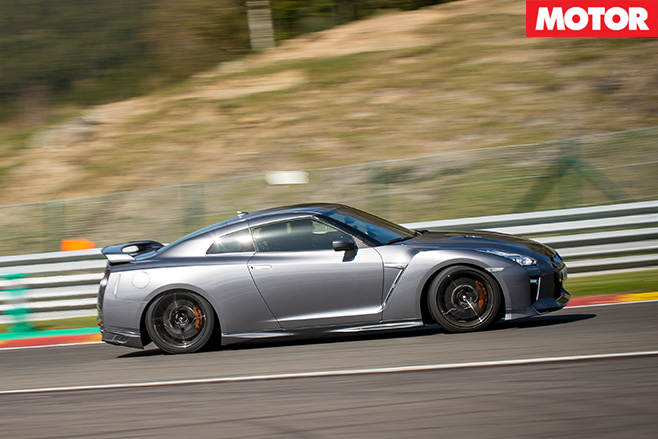
What really stops the GT-R from running with the Audi R8 V10 and new Porsche 911 Turbo is its heft – all 1752kg of it. The car feels potent where it can be given its head, but it no longer feels quite like it belongs in the big performance leagues redefined by the likes of the Ferrari 488 GTB and McLaren 570S. The Nissan’s giant-killing days would seem to be over – or at least on hold.
Weight also continues to limit its handling appeal, although the GT-R still has a trick or two up its sleeve. Feelsome, direct and accurate, the newly recalibrated steering draws you into the driving experience by your fingertips, while the stiffer chassis continues to produce the same prodigious lateral grip and awesome traction that have made the GT-R so famous for so long.
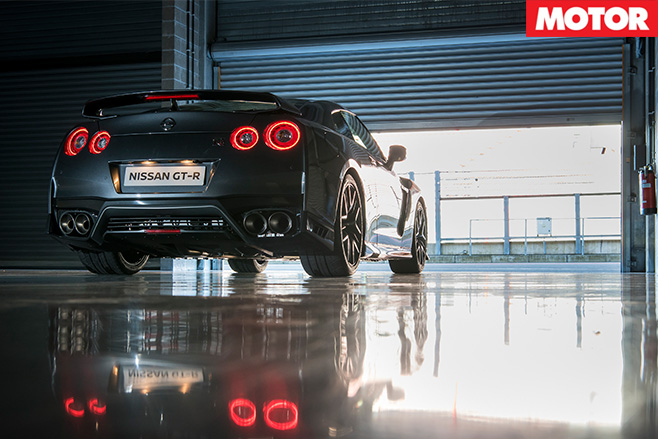
Beyond gentle initial slip angles, the GT-R’s limit handling character remains something to be explored with circumspection, though. When grip levels are breached, they drop away quite suddenly and the rear of the big car picks up momentum disconcertingly quickly. Keeping the car on line as the driveline shuffles power away from the rear axle can feel like an exercise more of luck than judgement – and if your luck runs out, you’d best hope it runs out somewhere there’s a lot of runoff.
So it’s clearly somewhat long in the tooth, it’s still rough around the edges and it could still do with losing a few pounds. And yet the facelifted GT-R remains genuinely, properly fast enough in every sense to shrug off the notion that it’s in any way past it. Those who like its muscle-bound, old-school ‘handle with care’ character won’t object to the lack of dynamic delicacy. At all. They could even be encouraged by it.

Giant-killer or not, the GT-R continues to pack a mighty punch. It’s also mellowing nicely with age.
4 OUT OF 5 STARS
LIKE: Improved manners; fearsome pace DISLIKE: Showing its age a little
SPECS Body: 2-door, 2+2-seat coupe Drive: all-wheel Engine: 3799cc V6, DOHC, 24v, twin-turbo Bore/stroke: 95.5 x 88.4mm Compression: 9.0:1 Power: 419kW @ 6800rpm Torque: 632Nm @ 3300-5800rpm Power/weight: 239kW/tonne Transmission: 6-speed dual-clutch Weight: 1752kg Suspension(F): double A-arms, adaptive dampers, anti-roll bar Suspension(R): multi-links, coil springs, dampers, anti-roll bar L/W/H: 4710/1895/1370mm Wheelbase: 2780mm Tracks: 1579/1601mm Steering: electrically-assisted rack-and-pinion Brakes(F): 390mm ventilated/drilled discs; 6-piston calipers Brakes(R): 380mm ventilated/drilled discs; 4-piston calipers Wheels: 20.0 x 9.5-inch (f); 20 x 10.5-inch (r) Tyre sizes: 255/40 ZR20 (f); 285/35 ZR20 (r) Tyres: Dunlop Sport Maxx (f/r) Price: $172,000 (est)
5 rebooted GT-R things: Devil in the details
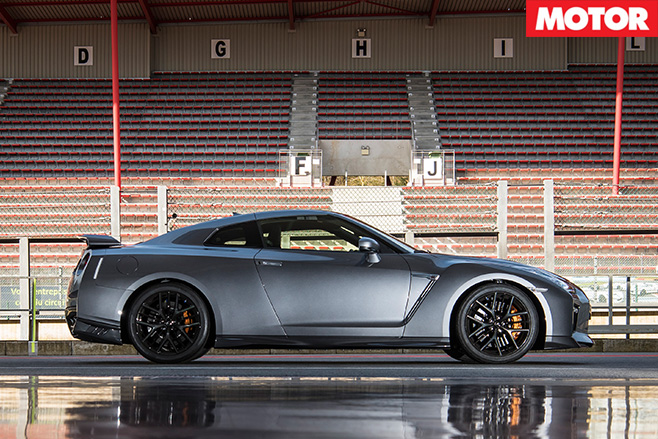
2. FLAPPY-TABS In a positive move, the shift paddles for the six-speed dual-clutch transaxle now move with the steering wheel rather than staying fixed to the column. Well done Nissan.
3. STRONG, SILENT Engaging ‘Exhaust Sound Control’ before starting the engine closes an electronic valve in the exhaust for a neighbour- and EPA-pleasing 10dB exhaust noise reduction.
4. STIFF BALANCE Changes in rigidity of the MY17 GT-R not only improve suspension response, but extra stiffening around the boot has improved the chassis stiffness balance, front to rear.
5. ON AND OFF Active Noise Cancellation matches and cancels some sound, then Active Sound Enhancement pipes exhaust noise back into the cabin via the stereo’s speakers.

